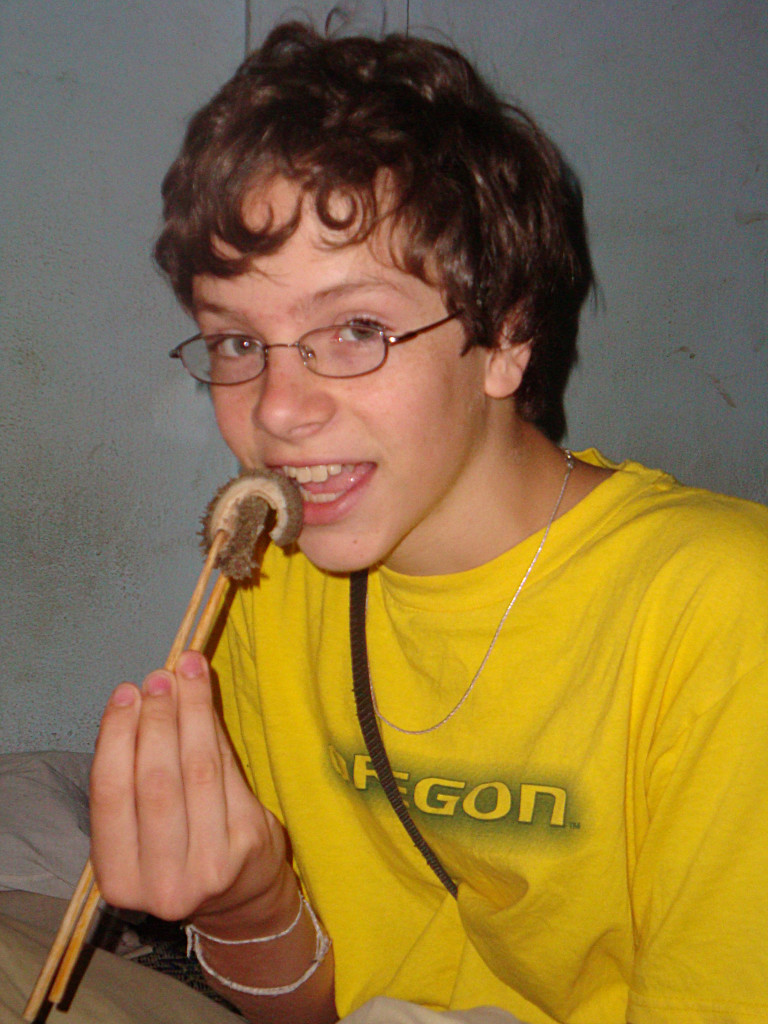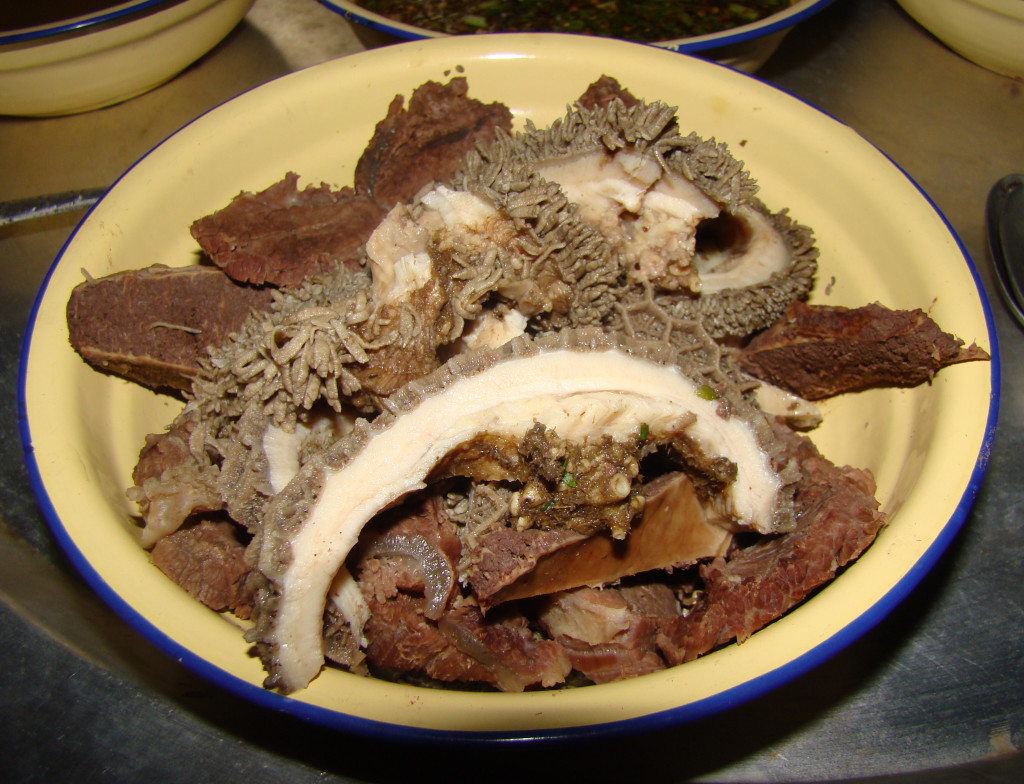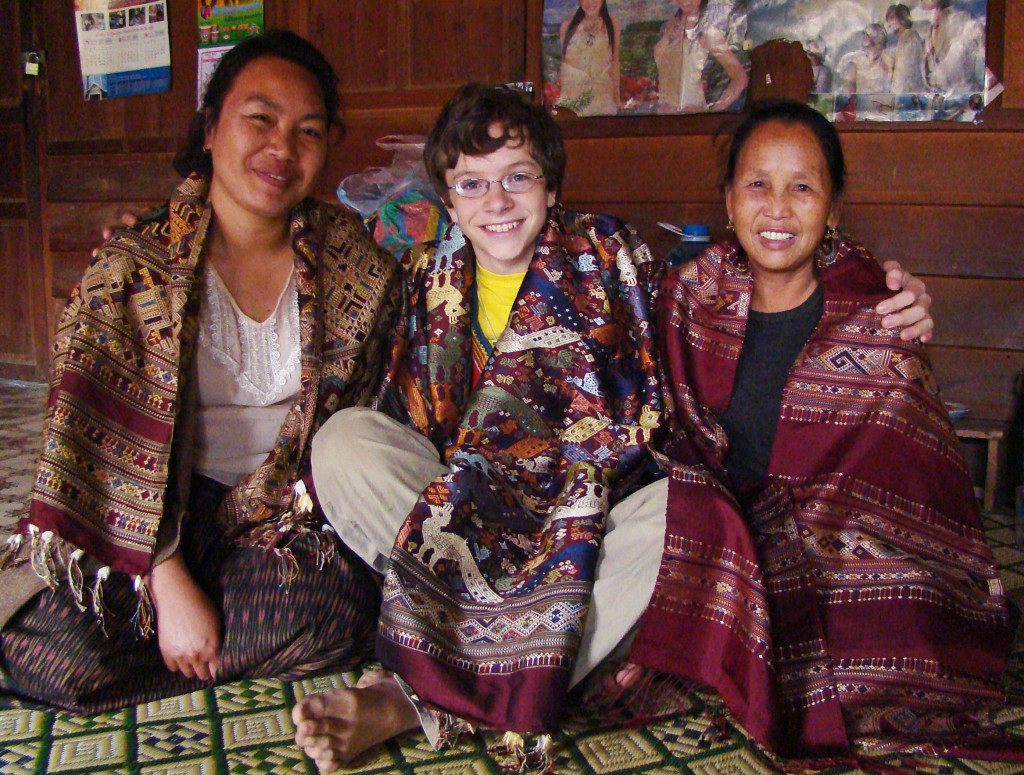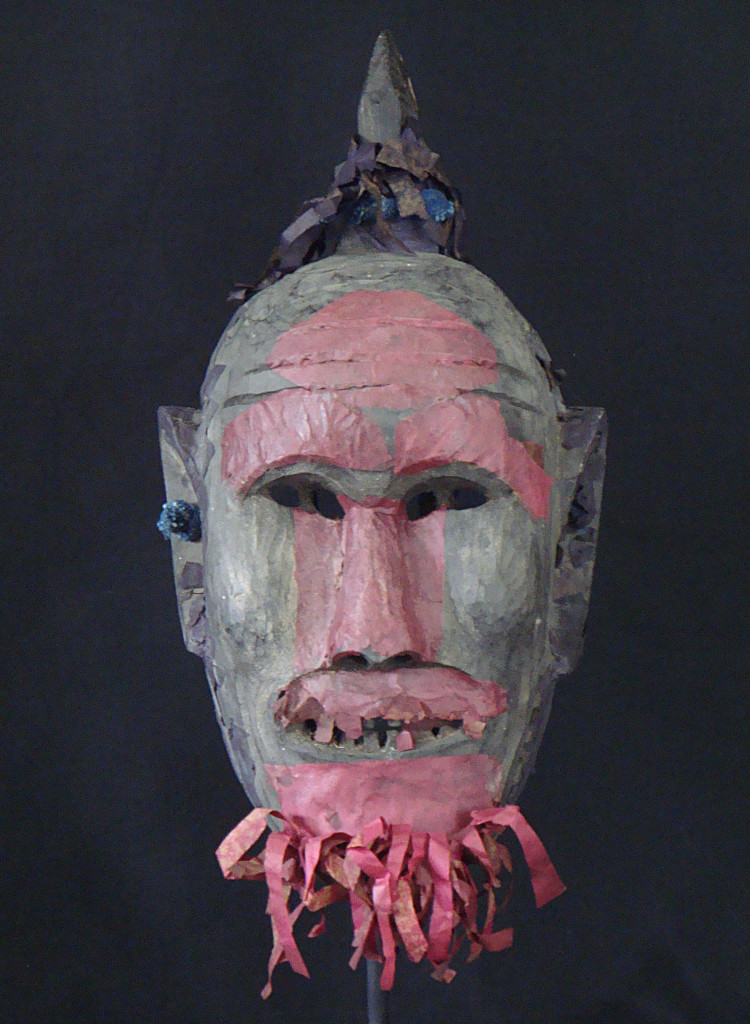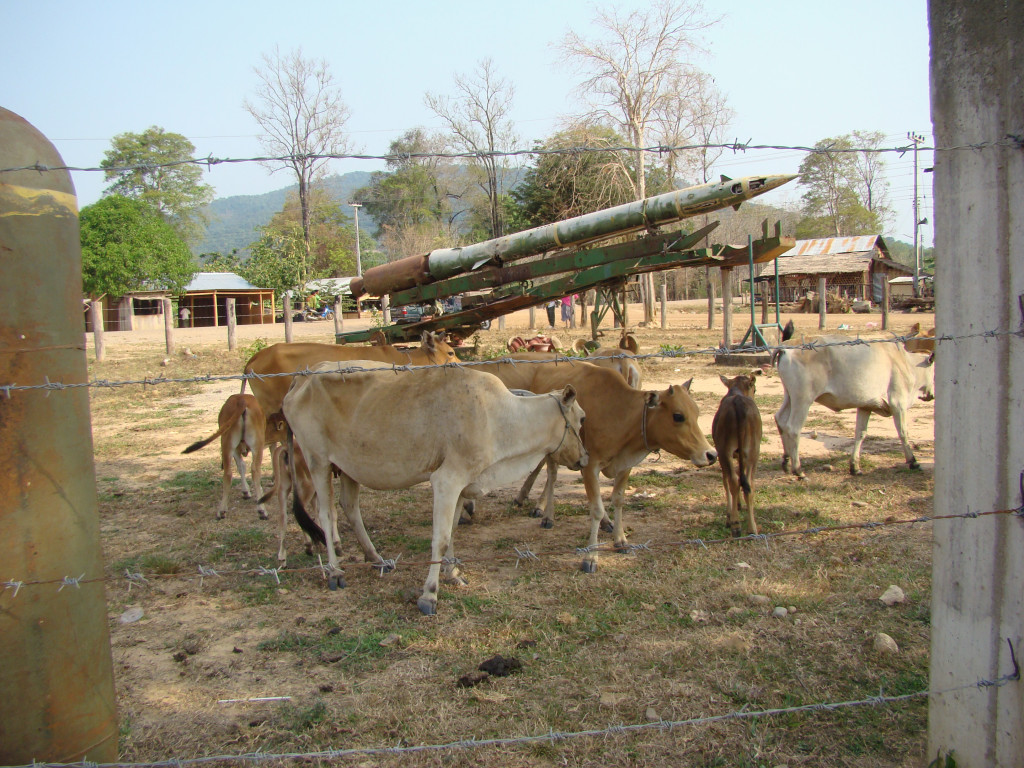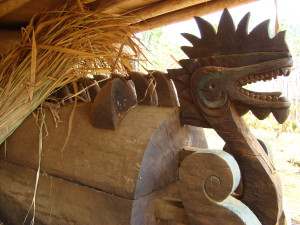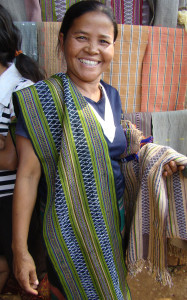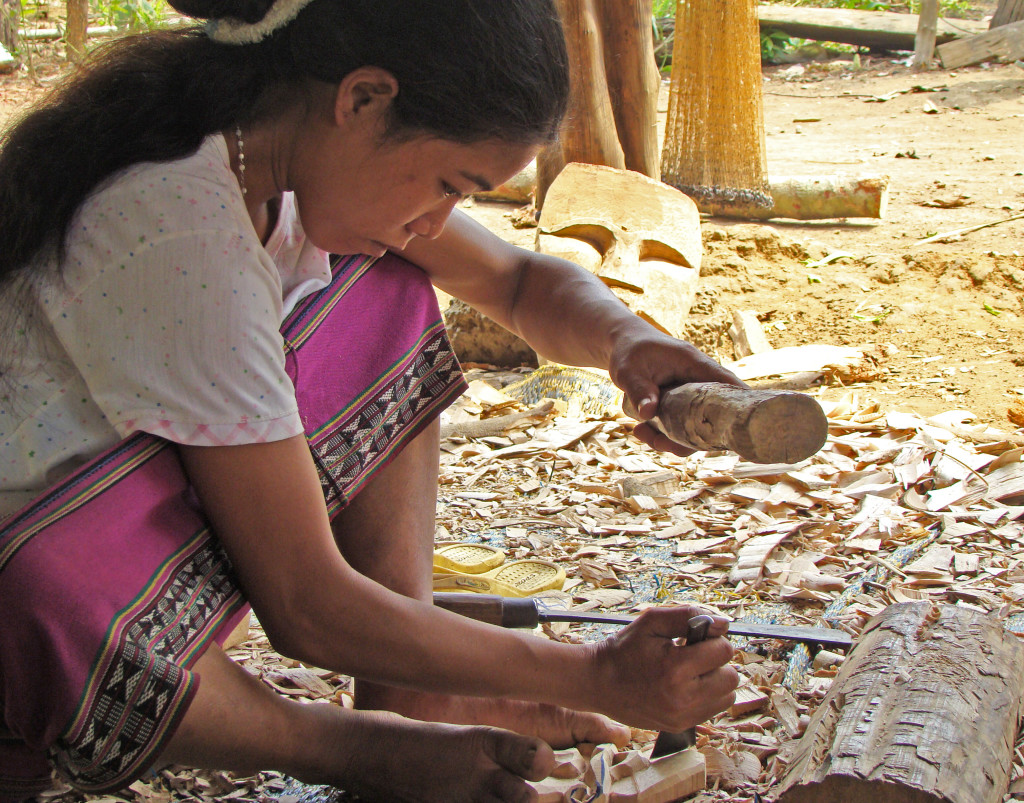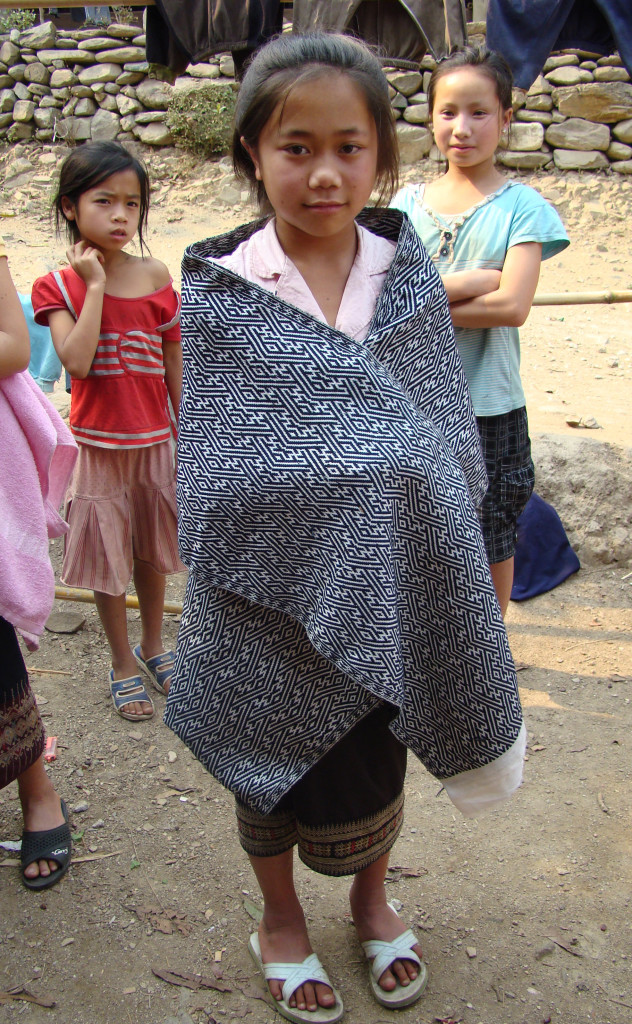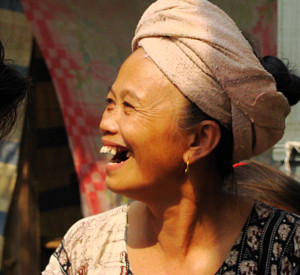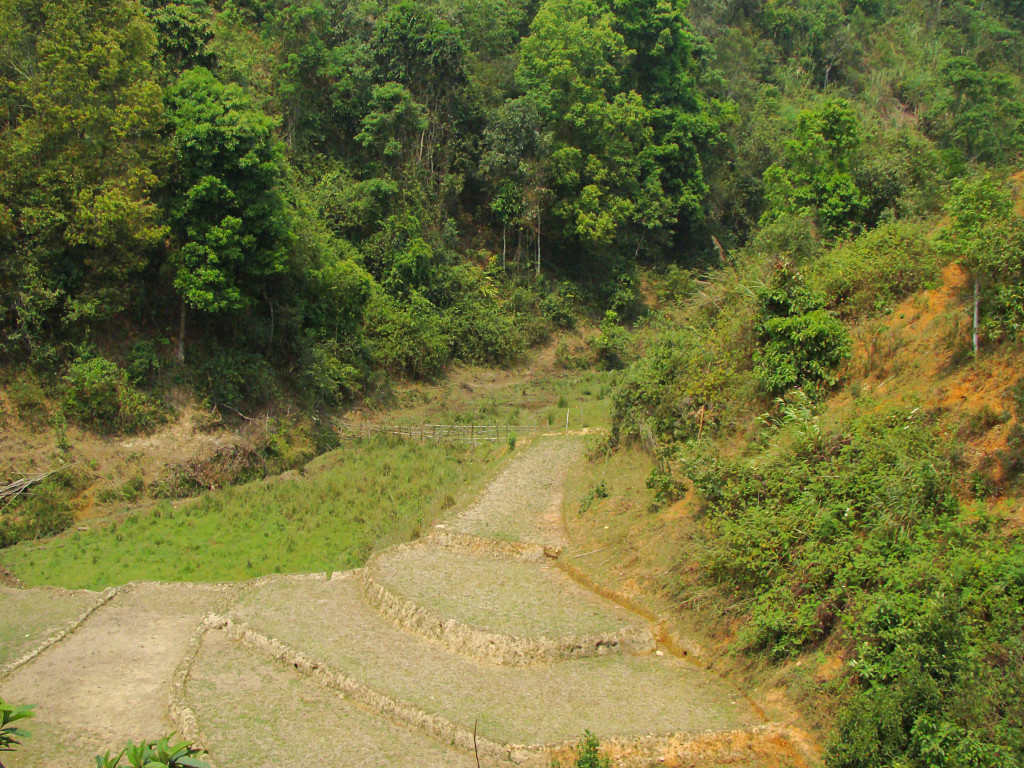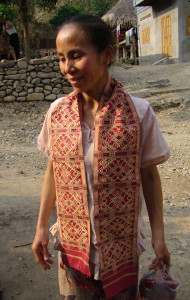Breakfast of Champions
As always happens when establishing business relationship and friendships in Laos, you get invited to a meal. This was the case with Mr. Vilay and his wife. We had offered them a ride from Luang Prabang to Xam Neua, a 10-hour van ride or a 13 to 20 hour bus ride (depending on whether the bus breaks down or not). So, since we were hauling so much stuff with us for the business, and it is extremely hard to fit in a bus, we decided to rent a van from for the drive. We had two more seats and offered them to the couple. Of course, when we arrived in Xam Tai, they immediately invited us for a meal at their house.
The next morning, we got up early and headed down to the Vilays’ house. While we admired his wife’s shop of textiles, Mr. Vilay spent over an hour laboring over a big pot cooking outside above a fire. After a long and hungry wait, we were led into the house and plopped down in front of a traditional ankle-high table. After a couple minutes of waiting, two big steaming bowls of a clear-brown soup came in and were put on the table, followed by dishes of chilies and cilantro, which my father loves, but everyone else has troubles with.
Then the last dishes came out, big piles of juicy… well, two different kinds of buffalo stomach (one was hairy, one looked like a brain), buffalo liver, and small amounts of fatty meat. I was handed a large piece of the hairy stomach first, which looked like a curled up giant white worm. Since Ms. Vilay presented it to me with her chopsticks, I of course had to eat it. I gave our hosts a big smile and bit half of the worm. It didn’t come apart with my first bite, so I continued to bite it – again, and again, and again. It was the slipperiest, chewiest, most rubbery thing I’d ever eaten (and that’s saying something). I managed to cut in half after the tenth bite and chew it up until it was in about four pieces. I could feel the little hairs against my tongue, and I knew I either had to swallow it or throw up. My brain made the decision for me and I managed to choke it down. I could feel the relief spread to my face. I gave Ms. Vilay a smile and a nod and went directly for the sticky rice.
“I know,” I thought, “I’ll try the soup.” Usually I expect soups to have vegetables – we have been treated to many soups in Laos made from spinach and other greens. It smelled a bit funky, but I scooped my spoon into the shared bowl. It tasted like – uh … intestines. Which made sense since it had been made, my dad said afterwards, by squeezing the inner lining of the intestines into boiling water. My dad looked at me and squiggled his eyebrows. I couldn’t decide whether to laugh or not. I restrained myself, swallowed quickly, and delved back into the basket of sticky rice.
Upon looking up from the rice, here comes Ms. Vilay again with her chopsticks, and a big thumb-sized piece of boiled liver. The lining from the saggy liver draped across the gut like an old plastic bag. I took a polite bite of the soft meat, and again put on my best smile. My stomach rushed up to my throat, and I put the remaining morsel on the side of my plate. I just got the mouthful down thanks to another handful of rice. I couldn’t manage to eat much more; my stomach was now quite completely upside down. Instead we moved onto the beverages.
Our hosts brought a bottle of lao-lao – traditional, and powerful, rice whisky. Let me remind you that this was at about 8:30 in the morning. Mr. Vilay poured himself a shot of lao-lao and raised his glass and thanked us in Lao (“Ngoc!”) for coming to his home and hoped that our friendship can continue for many years to come (at least that seemed to be the gist of his toast). The shot glass went all around the room (once for me, three times for everyone else). Next, instead of something like orange juice, he brought out 2 big bottles of Beer Lao (tastes like regular beer) and he poured everyone, including me, a big cup. Everyone was expected to empty their cupful immediately and hand it back to be refilled for the next person. Around the cup went – once, twice… Needless to say, after a while, we had to politely tell him that we couldn’t drink a lot (more) in the morning.
After several goodbyes, smiles and handshakes, we departed to visit our next hosts.
We headed next to Sukavit’s (a long-time business partner and friend) house for more shopping and lunch. My stomach rumbled dramatically for a couple of hours as my parents looked at and bought many of her things. Then came another traditional Lao meal. A narrow tarp was rolled out across the floor, and out came bowls heaped with plain boiled chicken, sticky rice, spicy chili sauces, fresh vegetable soup, and plates of steamed unseasoned greens. I could have bowed down to Sukavit. She had remembered our desire for bland food, and, full of pride, she even remembered that we prefer “bo peng neua, bo ghena” – no monosodium glutamate, no salt (do they love their salt!). I wolfed down a teenager’s worth of lunch, gaining the smiles of Sukavit and her family, and breathed a big, full sigh of relief.
I realize now that my teen-age tastebuds are pretty well set in their ways. It’s a challenge to open up my mind (and throat) to new flavors and textures, and sometimes just the thought of a new food sets me up for not having an open mind. For example, the buffalo stomach didn’t really taste bad at all – it was the rubbery texture and the thought of it that was most challenging. Sometimes I wish my mind wouldn’t override my stomach!

